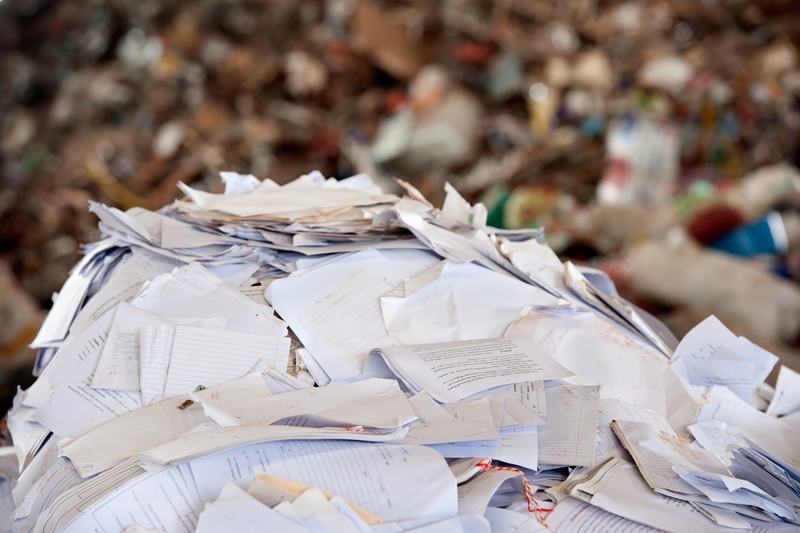
Tactics for Reducing Waste in Production
In today's competitive business environment, reducing waste is not just a goal but a necessity for sustainable growth. Waste in production can result from a variety of sources, including inefficient processes, overproduction, and more. This article will explore effective tactics that organizations can adopt to minimize waste and enhance operational efficiency.
Understanding Waste in Production
Before we dive into the tactics, it is essential to understand what constitutes waste in the context of production. Waste refers to any activity or output that does not add value to the product or the customer. Identifying and eliminating these wasteful processes can lead to substantial cost savings and environmental benefits.
The Seven Wastes of Production
Originating from Lean Manufacturing principles, the seven wastes, also known as 'muda' in Japanese, include:
- Overproduction: Producing more than what is immediately needed.
- Waiting: Idle time when resources are not being utilized effectively.
- Transportation: Unnecessary movement of products that does not add value.
- Over-Processing: Doing more work than required for the product.
- Inventory: Excess products and materials not being processed.
- Motion: Unnecessary movements made by workers.
- Defects: Products that do not meet quality standards and need rework.
Effective Tactics for Waste Reduction
Implementing effective tactics to reduce waste in production can bring about a significant shift in operational efficiency. Below are some practical strategies:
1. Implement Lean Manufacturing Principles
Adopting Lean manufacturing principles can significantly reduce waste in production. This methodology emphasizes creating more value for customers with fewer resources. Lean tools such as 5S, Kaizen, and Value Stream Mapping help in identifying and eliminating waste.
2. Conduct Regular Audits
Regular audits are crucial in identifying areas where waste occurs. By systematically evaluating production processes, organizations can pinpoint inefficiencies and take corrective action to streamline operations.
3. Optimize Inventory Management
Effective inventory management is key to reducing waste. Organizations should use strategies like Just-In-Time (JIT) to ensure that materials and products are delivered only when needed, thereby minimizing excess inventory and associated costs.
4. Enhance Process Automation
With technological advancements, organizations can leverage automation to enhance process efficiency and reduce waste. Automation can minimize human errors, speed up processes, and ensure consistency in production.
5. Foster a Culture of Continuous Improvement
Encouraging a culture where employees are motivated to continuously seek out ways to improve processes is fundamental. Engaging workers through training and involvement in decision-making can lead to innovative solutions that reduce waste.
6. Use Data-Driven Decision Making
Data analytics can provide critical insights into production processes, helping organizations identify patterns and predict potential issues. By leveraging data, companies can make informed decisions to minimize waste proactively.
7. Implement Energy-Efficient Practices
Reducing energy consumption not only decreases waste but also lowers costs. Organizations should explore energy-efficient technologies and practices such as LED lighting, efficient HVAC systems, and renewable energy sources.
Implementing Technology for Waste Reduction
Advancements in technology offer innovative ways to cut waste. Below are some technologies that can be pivotal in waste reduction:
IoT and Smart Manufacturing
The Internet of Things (IoT) plays a significant role in monitoring and optimizing production processes. IoT devices can track and provide real-time data on machine performance and production cycles, helping identify and reduce inefficiencies.
AI and Machine Learning
Artificial Intelligence and Machine Learning can predict maintenance needs, forecast demand accurately, and optimize supply chain operations, reducing waste by preventing overproduction and downtime.
Additive Manufacturing
Additive manufacturing or 3D printing allows for precise production, minimizing material waste. It is particularly useful in prototyping, where small batches are needed without significant waste.
Environmental and Economic Benefits of Reducing Waste
Reducing waste in production not only improves operational efficiency but also leads to substantial environmental and economic benefits:
- Cost Savings: Lowering waste reduces costs related to materials, labor, and energy.
- Environmental Sustainability: Fewer resources and energy lead to lesser environmental impact.
- Enhanced Reputation: Organizations committed to sustainable practices often enjoy a positive brand image.
- Compliance: Meeting regulatory standards concerning environmental waste can prevent fines and legal issues.
Conclusion
Adopting effective tactics for reducing waste in production is critical for any organization aiming for sustainability and efficiency. By embracing Lean principles, conducting audits, optimizing inventory, and leveraging technology, companies can significantly reduce waste, benefiting both the environment and their bottom line. As the landscape of global business continues to evolve, the emphasis on waste reduction will likely become more pronounced, encouraging more innovative strategies and solutions.
